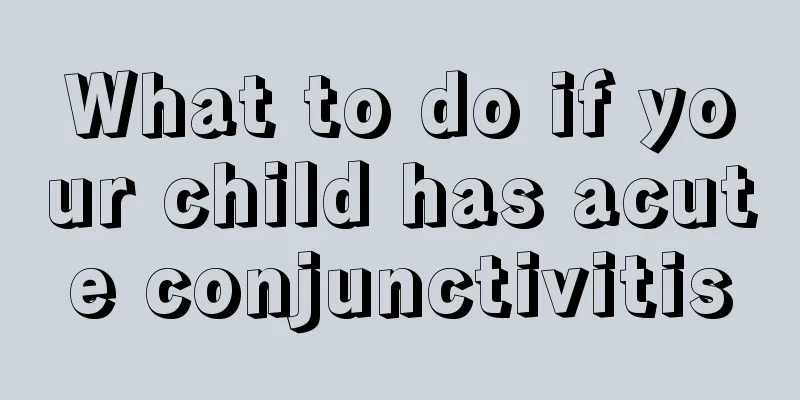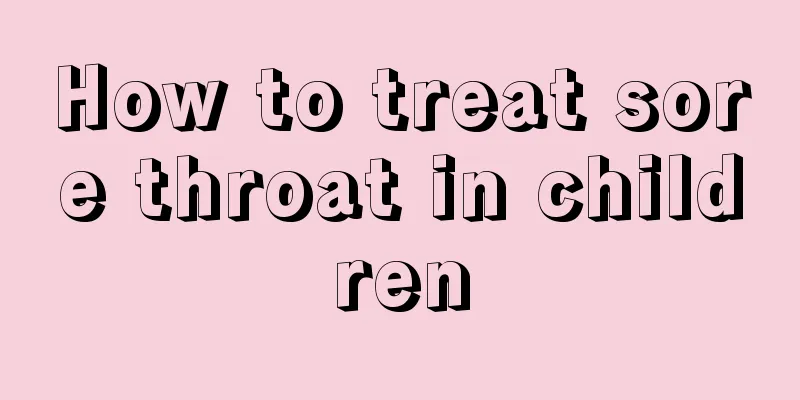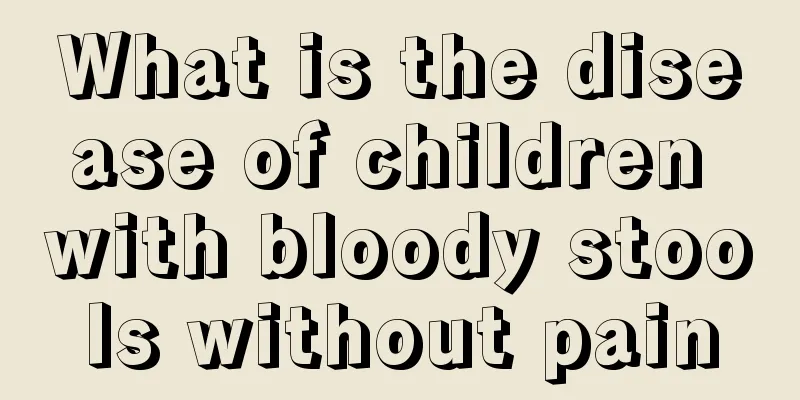What to do if your child has acute conjunctivitis

|
Many parents are particularly troubled by their children suffering from conjunctivitis because they don't know much about the specific contents of conjunctivitis. In fact, conjunctivitis is divided into two types: infectious and non-infectious. Infectious conjunctivitis will not recur, while non-infectious conjunctivitis will recur repeatedly. Allergic conjunctivitis is one of them. If your child has conjunctivitis, the best way is to go to the hospital for treatment. This article introduces the relevant details, let’s take a look. 1. What is conjunctivitis It refers to inflammation of the white part of the eye. There are three situations: 1. Acute conjunctivitis: The eyes become red, swollen, hot and painful, the eye discharge becomes colored and turns yellow, and the secretion increases. 2. Chronic conjunctivitis: The symptoms are similar to those of acute conjunctivitis, but the course of the disease is longer, generally 6 weeks to 3 months. 3. Allergic conjunctivitis: The eyes are very red, and the baby will say that the eyes are itchy and tearful. If you rub it with your hands again, there may be a secondary infection problem. 2. Causes of conjunctivitis Usually, younger children have weaker immunity and are more susceptible to conjunctivitis due to bacterial infection. Older children often suffer from infectious conjunctivitis, especially highly contagious viral eye diseases. Pink eye is an acute infectious eye inflammation that is more common in spring and summer. How to treat conjunctivitis 1. Take your baby to the hospital and carefully find out the cause during the diagnosis and treatment process. Once you know the cause of your baby's eye disease, you should immediately avoid contact and stop the stimulation of allergens. 2. Prepare special towels. Towels and handkerchiefs used by babies should be kept separate and boiled in boiling water for 5 to 10 minutes after each use. 3. Apply cold compress to eyes. Use a cool towel or cold water bag to apply cold compress to your baby's eyes, and avoid hot compress, because hot compress will increase the local temperature and dilate blood vessels, resulting in increased secretions and worsening symptoms. 4. Use eye drops. When putting eye drops in your baby's eye, you must first comfort the baby and let the baby lie on his back with his face upwards, so that the eye drops can stay in the conjunctiva for a while. In addition, the gaps in the conjunctiva are very small, making it difficult for eye drops to stay. Plus, the eyelids keep blinking, so the eye drops can only stay for a short time. So you must apply eye drops as often as your doctor tells you to, and don't reduce the frequency without authorization. Only in this way can the eye drops work. In order to avoid affecting the baby's vision, it is usually necessary to apply eye ointment to the baby before going to bed. |
<<: Allergic conjunctivitis in children
>>: What to do if your child has cervical deformity
Recommend
What to do if your baby keeps having a cold and cough
Because the baby's body functions are not yet...
What's wrong with the protruding bones on both sides of the baby's head?
For parents, once they find any abnormality in th...
Can I go out to play if I have hand, foot and mouth disease?
After your baby gets hand, foot and mouth disease...
Is it normal for a newborn to breastfeed so often?
Many young mothers know that breastfeeding has ma...
Don't fall into these treatment misunderstandings for children with amblyopia
Nowadays, many parents are often too busy with wo...
What is the reason for the red pimples on the corners of the baby's mouth?
It is a common phenomenon for babies to have red ...
How to treat children's lip blisters
Parents are very anxious when their children have...
What are the symptoms of puberty in children
Children will undergo certain physical and mental...
What are the causes and treatments for hiccups in children?
Sometimes we all burp when we eat too fast or dri...
CPR for children
We may have seen many children suffering from neo...
How can students improve their memory?
Memory is very important for children, because we...
1 year old baby has fever and convulsions
It is quite common for a one-year-old baby to hav...
Reasons for poor appetite in newborns
We all know that when a newborn baby comes into o...
How to treat prickly heat in children?
When summer comes, everyone is prone to prickly h...
What to do if your child keeps wetting the bed
If children always wet the bed, parents should pa...









